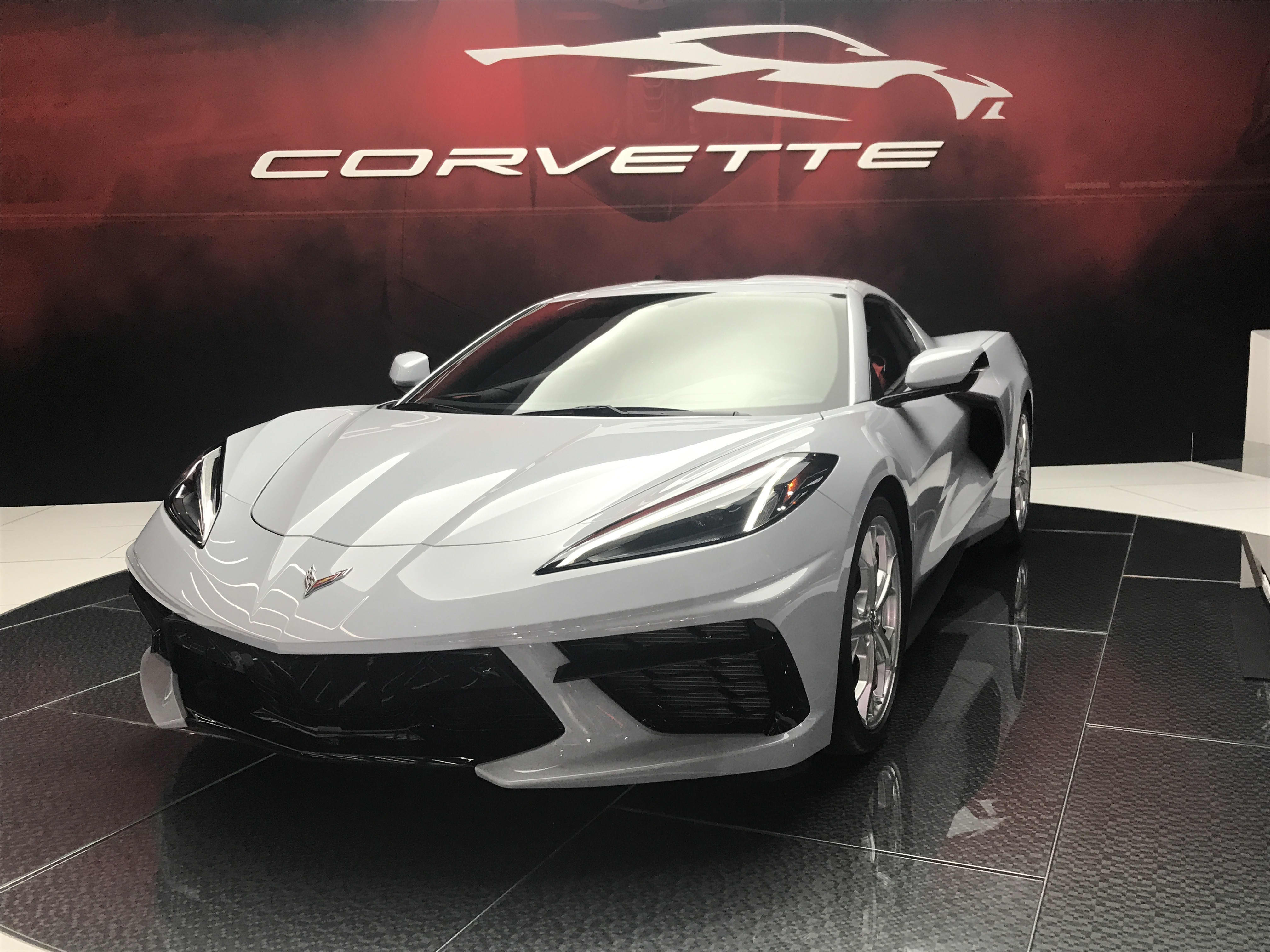
A mid-engine 2020 Chevrolet Corvette on the floor of the Los Angeles Auto Show on Nov. 21, 2019.
Michael Wayland / CNBC
DETROIT – General Motors is evaluating whether to expand its Corvette lineup – currently a two-seat sports car – to add its first-ever crossover or SUV, a person familiar with the discussions confirmed to CNBC.
Expanding one of GM’s most-prized nameplates to a different body style, if not a family of models, has been an on-again off-again discussion inside the Detroit automaker for some time. In late-2019, Morgan Stanley analyst Adam Jonas said a Corvette sub-brand could be worth $7 billion to $12 billion for the automaker.
Bloomberg reported Thursday afternoon that GM has designers working on several Corvette-brand concept vehicles that target a wider range of buyers, likely as an all-electric crossover SUV as early as 2025.
A source familiar with Corvette’s operations, who asked not to be named because the plans are not public, confirmed to CNBC that GM is discussing such an expansion but stressed nothing has been finalized and similar discussions before have not resulted in any new products.
A GM spokesman declined to comment.
If GM decides to expand Corvette to a crossover SUV, it would likely be electric, analysts say. The company has committed to launching 30 new EVs by 2025 under a $27 billion plan to develop electric and autonomous vehicles during that time period. The next-generation EVs will be underpinned and powered by GM’s new Ultium battery cells and platform, which the automaker spotlighted earlier this week during the CES technology conference.
“The Ultium platform will allow Chevrolet to further expand its range of electric vehicles to full-size pickup trucks, compact crossovers and even high-performance vehicles,” Michael Simcoe, GM’s vice president of global design, said during a Tuesday presentation for CES, which was streamed online this year.
The biggest hesitation in expanding the Corvette line in the past has been the risk of diluting the brand and diminishing the reputation of the sports car, which launched in 1953. But GM recently radically redesigned the car from a front-engine to mid-engine layout to great fanfare. And such thinking has been debunked in recent years as consumer demand has moved away from cars to crossovers and SUVs.
Exterior of the 2019 Lamborghini Urus with a base retail price starting at $200,000.
Adam Jeffery | CNBC
Several performance and luxury car brands such as Lamborghini, Maserati, Bentley and Aston Martin have all grown their brands by adding crossovers or SUVs. Porsche, which launched its first non-sports car nearly 20 years ago, now sells more crossovers every year than its traditional sports cars.
GM’s largest crosstown rival, Ford Motor, also expanded its Mustang lineup with a new all-electric crossover last year called the Mustang Mach-E, which has largely received positive reviews from critics.
In 2019, Morgan Stanley’s Jonas said Corvette was “undervalued and underappreciated by the market” in a note to investors. An expansion, he said, could assist in funding the automaker’s pivot to all-electric vehicles.
When Jonas brought up a Corvette SUV to GM CEO Mary Barra in 2019, she didn’t kill the idea: “Well, I appreciate that you think our Corvette franchise is very strong. I’m not going to talk about future,” she said during a quarterly earnings call in October.
Barra later added that GM would look “at a variety of things as we move forward. She said that the company recognizes “the strength of the Corvette brand.”




